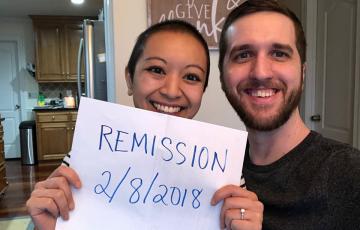Search Results
Miriam
My name is Miriam Hernandez, and I have been a long-time volunteer with The Leukemia & Lymphoma Society (LLS). I first started volunteering in 2010 working with the LLS Greater Los Angeles Region and their Patient Services Team to help with outreach into the Latino community in Los Angeles. I worked on an education program about myths and misconceptions about blood cancers done in the form of a “bingo” style game.

Andrew
When I write about the fact that I have cancer, it is not my intention to suggest that I am in any way unique. Although when I was first diagnosed with non-Hodgkin's lymphoma in 2010, I did feel special, and not in a good way. At first, I thought I had a hernia. But the surgeon said no. It took almost two months for the biopsy of the lymph node that he extracted from my body to be definitively identified. They sent it to Bethesda for further analysis. Still no answer. I then had a second biopsy.
Samantha
I was diagnosed with cancer in January 2023. We initially thought it was a misshapen aortic arch until I got an echocardiogram. After I was formally diagnosed, I told my friends. I underwent surgery, and my friends and family came to visit me once I was awake. I was set to be in a runway show before I was diagnosed, and I decided to still walk in it. I dyed my hair purple before the show so I could raise awareness on the runway. This is when my modeling career began, and I began to gain a following on TikTok.
Helena
In 2018, a few days before Thanksgiving, Helena noticed something. She was having difficulty lifting speakers at her gigs. She became winded after only a few songs. Even the most minute tasks became daunting.
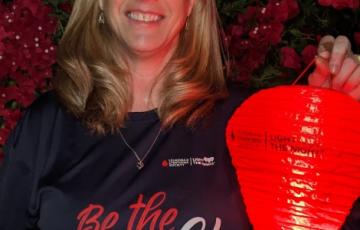
Heather
Heather Banks draws her inspiration from her good friend, who has been fighting non-Hodgkin's Lymphoma for the past 10 years and her college best friend who is a survivor. She is motivated by her friends’ strength, determination, and positivity. In times of feeling helpless, she channels that energy and puts it into her sewing machine.

Tracy
In 2001 at the age of 31, I was living in Maui working at the Ritz Carlton and began to feel sick. I had a rash on my hand, was tired, losing weight, and just did not feel well. I had been healthy all my life so thought it would pass.
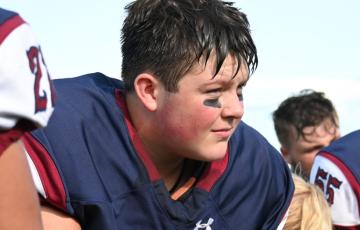
Joshua
Joshua was a regular 11-year-old. He played multiple sports, was learning to play the flute in the school band, and enjoyed having fun with his friends. After a few weeks of a nagging sore throat and enlarged tonsils, we took Josh to see his primary care physician (PCP). They ran some tests and sent him home. No big deal, just a routine trip to the doctor’s office. Josh's PCP called the next day at 6:00 p.m. . . . on a Saturday. She said that she was worried about some of Josh's blood test results and recommended we go to an urgent care or emergency room for further checks.

Tristan
I live in Colorado but grew up in Massachusetts and am an elite rock climber. I've traveled worldwide to climb and was the 2015 collegiate national champion. In April 2022, I was bouldering by myself and hit my shoulder on a rock behind me. Falls happen as frequently as a baseball player may swing a bat while climbing. This fall was nothing out of the ordinary except my shoulder was bruised far worse than I would expect from how hard I hit it, growing to the size of my hand by the next day. I remember looking at it initially and thinking, "Geez, I hope that's not leukemia."
Relapsed and Refractory
Refractory non-Hodgkin lymphoma (NHL) is NHL that has not responded to initial treatment. Refractory disease may be disease that is getting worse or staying the same.
Relapsed non-Hodgkin lymphoma (NHL) is NHL that responded to treatment but then returns.

Gerardo (Jerry)
I came into this world with a 65,000-mile warranty. During all my life, maybe I had a cold once in a while, some minor stuff, a bit of bursitis, but nothing that you would consider life-threatening at all. One day during a routine exam, I had blood work done. My PCP told me she didn't like my white blood cell count, and it was best to have a specialist look at it. She referred me to an oncologist. I didn’t think of it much, and since I was feeling fine, I thought it must be nothing of consequence.

Rick
Rick Ostroff and his family have a legacy of philanthropy with a heartfelt connection to a disease he never had. During the first three years of his life, he spent time on the leukemia floor of Children’s Hospital in Boston but eventually was found to have the critical illness of gamma globulin anemia rather than then-fatal leukemia.
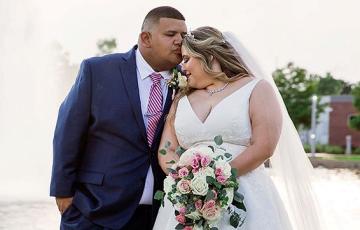
Heriberto
I was diagnosed with Burkitt lymphoma (BL) on Friday the 13th ― August 13, 2021, to be exact ― seven months after being married, three months after my wedding reception, and going on my honeymoon.

Allie
When I was in fourth grade in 2015, my older brother Nate (a freshman in high school at the time) was rushed by ambulance to the U of M Masonic Children’s Hospital. His spleen was holding 10 times the normal amount of red blood cells. This led to the discovery of his cancer. He was later diagnosed with chronic myeloid leukemia (CML). He missed out on the first month of high school and hockey season, but he was able to take medicines at home so that he could eventually attend the rest of the school year.
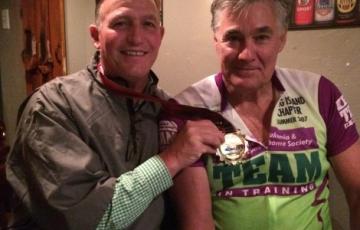
Tim
On March 10, 2015 I reached another milestone and turned 60 years young. I have been blessed with good health and the ability to swim, bike, and run. For over a decade I have been involved with The Leukemia & Lymphoma Society (LLS) as a board member and participant in more than a dozen fundraising triathlons/marathons for Team In Training events all over the world. My efforts will continue until cures for blood-related cancers are realized.
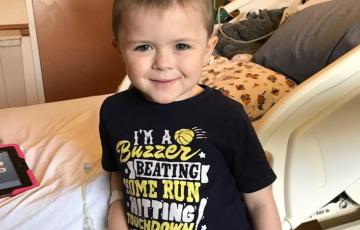
Lincoln
In the fall of 2017, Lincoln was not feeling well and had typical cold virus symptoms. He also had a recurring fever and an unexplained rash. After two trips to the pediatrician, the doctor thought he had a persistent virus and then bronchitis. On our third visit, they thought he may have mono, so bloodwork was taken, and we were told to go to Children’s Hospital immediately. We were scared and had no idea what was wrong. Cancer was not even a thought.
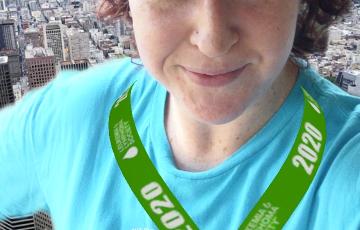
Leigh
In August 2019, I developed pneumonia for the third time in two years. I had been finding that my ability to fight off illness was not as good as it used to be. Once it got to the point that I was having problems breathing, I decided to go to urgent care. Two years prior, I had been hospitalized for pneumonia, and I wasn’t looking forward to it happening again. I Googled the nearest urgent care, and it was closed. There was only one nearby that was open, but I had never been before.
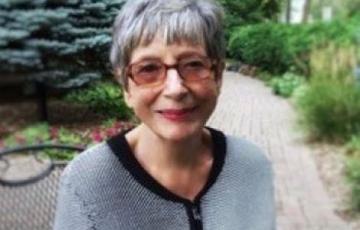
Ilse
Thirty years ago I was told I needed additional blood tests after a routine check-up. I was too busy to follow those instructions. Looking back, it probably was an excuse not to have to face the truth. My fatigue and many infections I had attributed to stress in my personal life. I convinced myself there was nothing to worry about.
Nina
Back in March 2015, my then 26-year-old daughter was not feeling well. She had severe abdominal pain, overwhelming fatigue, night sweats, a low-grade fever, a headache, and appeared to be losing weight. At the time, my daughter was working as a speech language pathologist in a hospital in Maryland. She was misdiagnosed by an ER droctor and two months later, after her primary care doctor ordered an ultrasound, we found that she had innumerable tumors in her lungs and spleen. We saw an oncologist the next day who ordered more blood work and a PET scan, as well as a bon

Whitney
I am delighted to be a new member of the Clinical Trial Support Center team at The Leukemia & Lymphoma Society (LLS)! After eight years as a clinical nurse, charge nurse, and assistant nurse manager at various oncology hospitals across the country, I am honored to now work with blood cancer patients as a Spanish-speaking, CTSC nurse navigator.

Tom
Hello Friends — this is my leukemia journey, For those of you who don’t know me, my entire 38-year teaching career was spent with 9-12 year olds. I’ve always relished the authenticity and passion of this age group and that led me to a very satisfying and rewarding chapter in my life.

Jania
In November 2018, I was diagnosed with acute myeloid leukemia (AML). It's a type of cancer of the blood and bone marrow that progresses very rapidly. When I was initially diagnosed, I believed my life was over. As a seventeen-year-old high school student attending school from a homeless shelter, going to bed hungry most nights, I considered dropping out to help my mother with my younger sister and brother. I couldn't fathom the financial burdens that would follow with medical treatment. I felt like the more I attempted to correct things, the worse they became.
Treatment Outcomes
Treatment results and outcomes vary among patients. The advent of the chemotherapy drug cladribine (Leustatin®) has resulted in approximately an 85 percent rate of complete remission (no evidence of the disease) and approximately 10 percent rate of partial response.
Many patients remain disease free for years or decades after treatment with cladribine or pentostatin (Nipent®) and have a normal life expectancy.

Mara
I was in my second to last year of nursing school and just over one year into my marriage when the headaches became too much to bear. I was 21. I was tired all of the time, but I was working in a busy ER and going to class when I wasn't at work. I had lost some weight, but I had been exercising more and getting a lot while working in the ER. I had a cough, but they tell you that you'll be sick a lot when you're in nursing school. Unfortunately, I happened to touch my neck one day while studying with classmates for a big exam. There was a lump there that I had never felt before.
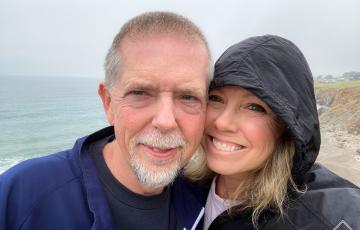
Donna
The year 2021 was quite a year for us. It was the year of cancer. No one ever really prepares themselves for the diagnosis of cancer, and when you're told you have it, the emotional roller coaster you are about to embark on cannot ever be fully described in words. The fear, the exhaustion, the financial burden, the feeling of helplessness you experience is completely terrifying. In the year 2021, we started the fight of all fights, the fight to save my husband's life. This is our story of cancer. Our story of love, life, hope, and healing.
